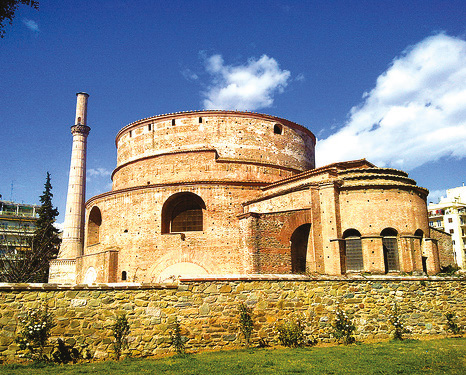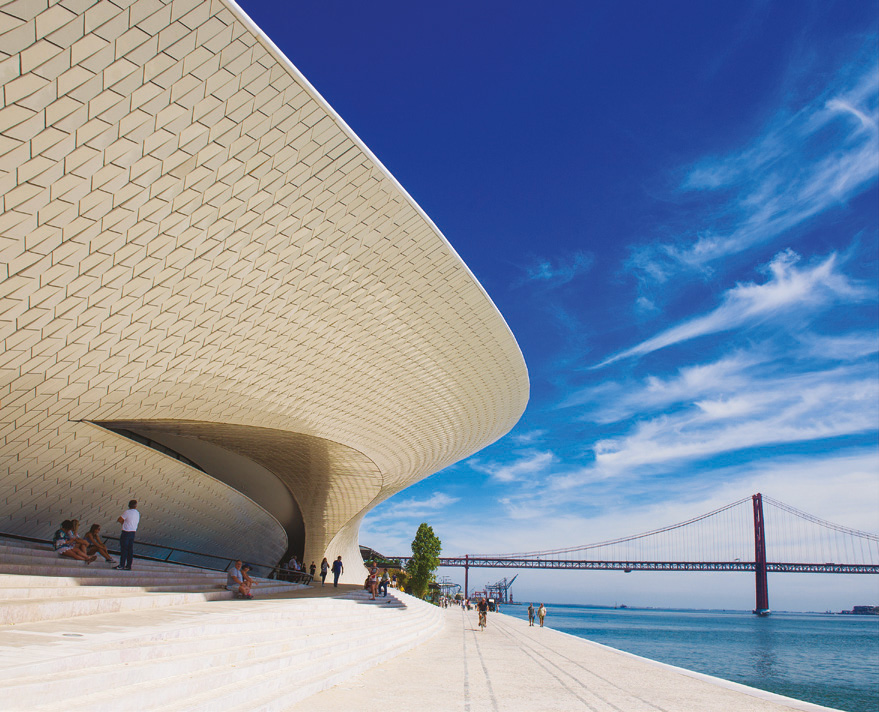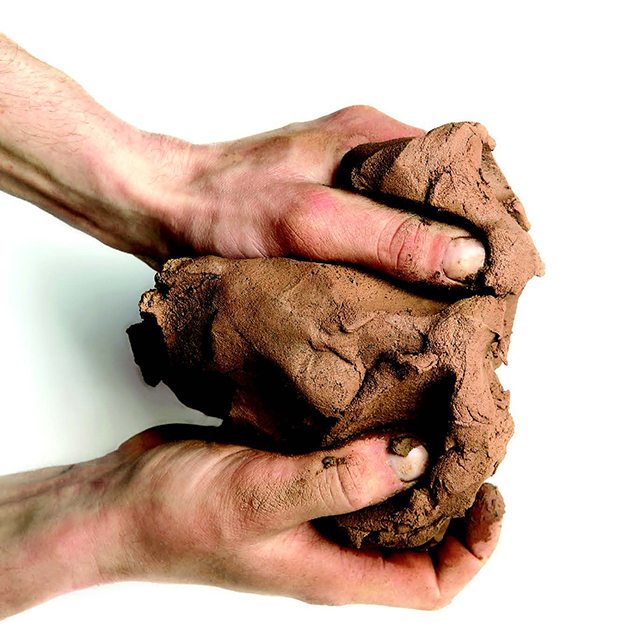Introduction
For thousands of years, ceramics have been used in a wide range of applications, and today, the European ceramic industry is a global leader in both production and innovation.
History and modernity,
side by side

Wherever you go in Europe, from Gmunden to Faenza, Delft, Castelló de la Plana, Bolesławiec, Höhr-Grenzhausen, Limoges, Sassuolo, Selb or Stokeon-Trent, you will find the rich heritage of the European ceramic industry.
Stopping (using your car’s ceramic brakes) in even the smallest village, you will discover the versatility of ceramic products: from bricks to roof tiles, sanitaryware, tableware and ornamental ware, clay drainage pipes or wall and floor tiles, expanded clay; not to mention the industrial and hi-tech applications such as refractories and technical ceramics.
For thousands of years, ceramics have been used in a wide range of applications, and today, the European ceramic industry is a global leader in both production and innovation.
Since Roman times, clay has been extracted from the ground across Europe to be turned into everything from terracotta tiles to toilets.
The ceramic industry in Europe today is building on thousands of years of skill, tradition, expertise and flair – delivering high-quality, versatile products that play a critical role in our homes, businesses and industries.
This proud history is what makes the European ceramic industry so deeply rooted in Europe’s economy, society and culture.

Ceramics – a continental champion
The European ceramic industry has a total EU turnover of €26 billion, and more than a third of production volume is exported outside the EU. The industry provides more than 200,000 direct and 400,000 indirect jobs, across every country in Europe.
Ceramics are integral to many other industries, which is why our sector is at the heart of many manufacturing and R&D clusters across Europe – fostering knowledge and innovation.
Europe is the cradle of the ceramic industry worldwide, and still the point of reference for the highest quality, the most sophisticated manufacturing methods, the most sustainable production, and the most attractive design.
Accelerating progress
Our industry is on a course towards decarbonisation, building on past achievements and leveraging innovation. The very nature of our production requires heat, and as we transform raw material into products, the fuel and process emissions generated will need to be further reduced, captured and sequestrated, reused, compensated for, or offset. Nevertheless, we are confident that, with the support of a robust EU policy framework, we can work together towards this common objective.
With strong backing from the EU institutions and Member States, the ceramic industry in Europe will continue to raise standards of innovation, social responsibility and environmental leadership.
The European ceramic industry is committed to working with the European Union institutions to lead the transition to a net zero-carbon economy within the coming decades.
On a mission to reduce emissions
Ceramics are made from natural materials, but their production is energyintensive and generates emissions. At all levels of production, the European industry is working together to reduce these emissions.
We have already come a long way. For example, the CO2 emitted to produce the clay blocks for one square metre of an external wall has on average been reduced to approximately 50% between 1990 and 2020, and for one tonne of wall and floor tiles the energy used was reduced by 47%. Total CO2 emissions in the ceramic industry in the EU fell by more than 45% since reaching a peak in the year 2000.
Determined to decarbonise
Every industry has a role to play in making Europe environmentally sustainable for future generations. We are committed to continue down the decarbonisation road, guided by the ambitions of the European Green Deal.
Cerame-Unie, as the voice of the ceramic industry in Europe, is working on plans to progressively increase the efficiency, and rapidly decrease the environmental impact, of the sector’s production. Our roadmap presents an ambitious vision for Europe to become a net-zero emitter by the middle of this century.
The European ceramic industry, because of its unique products that are essential to so many value chains, is a key component of Europe’s decarbonisation ambition for 2050 and beyond. However, we cannot achieve our goals in isolation. Our industry is part of a broader industrial ecosystem that includes raw materials supply, energy sources, manufacturing sites and downstream users. All parts of the European economy, and indeed society, will need to work in unison to meet the ambitious goals we have set. Policymakers at European, national and local level have a key role to play to create the right conditions for change.
The use of ceramic materials can help save energy
Our carbon commitment covers not only the production processes of the European ceramic industry but impacts the many other sectors that rely on our products.
As the renovation and upgrading of residential and public buildings gathers pace, our sector is ideally placed to contribute to ensuring the highest standards of energy efficiency and the least possible energy leakage. A broad range of ceramic products, ranging from clay blocks with inherent insulating qualities to ventilated cavity walls and clay facades or roof tiles, all help make buildings more energy-efficient.
In energy-intensive industries, refractory products help contain energy where it is needed, minimising energy wastage.
Sustainability is in our DNA
Cerame-Unie members take their role as corporate citizens seriously. Our top priority is to help our industry to flourish as an industrial standard bearer in Europe and throughout the world as a genuine export champion.
Sustainability is at the heart of everything we do as an industry.
- Environmental – constantly enhancing our resource efficiency while lowering our environmental impact.
- Social – providing good local jobs in mainly rural areas across Europe, and contributing to create healthier and affordable buildings.
- Economic – nurturing a competitive sector that fosters a modern, hi-tech economy and local value creation.
Sustainability is also a life-cycle concept. Secondary raw materials from our industry and other industries can be used, and ceramics can be recycled and reused, so the industry itself becomes more sustainable because it is preserving raw materials and subsequently limiting emissions associated with extraction.
Committed to Europe from start to finish
The European ceramic industry provides key materials for many strategic sectors from construction to manufacturing, automotive and energy production. Accordingly, ceramics will play an essential role in delivering on the European Green Deal, and ensuring that it can be done while promoting the “open strategic autonomy” of the European Union.
While some other industries have moved manufacturing offshore, the European ceramic sector benefits from a robust European supply chain at every step, and is committed to remaining a strong and reliable contributor to the EU’s “open strategic autonomy”. European ceramic products are exported globally, but their supply chains are often local, creating fully integrated industrial clusters around Europe. Thus, the local ceramic production in Europe can help support the EU’s self-reliance.
However, our industry still remains at high risk of relocation, also known as carbon leakage risk. A level playing field, supported by trade policy, is paramount to ensure the viability of the industry in Europe.
We are committed to strengthening and greening this supply chain throughout, reinforcing the industry’s position as a leading player inreducing our environmental impact. This strong European identity is what distinguishes us as a socially and environmentally responsible industry. We want to ensure that our heritage of thousands of years of ceramic production and our innovative and competitive ecosystems in Europe continue to thrive, and that the communities where our members are based continue to benefit from our commitment to them.
In maintaining and strengthening the ceramic industry in Europe by ensuring a just transition and a level playing field, we look to the European Union institutions for political support and policy clarity, so we can remain a global leader in the context of Europe’s net zero-carbon ambition. Our industry is a flagship exporter in Europe, and a standard bearer of European quality, innovation and expertise. We want to keep it that way.
Innovation – what we do best
At a time of transformation and uncertainty, the European ceramic industry’s anticipation, versatility, and adaptability are among our greatest strengths.
Innovation is at the heart of everything we do. With over a third of the European ceramic industry’s production being exported outside Europe, we are a window for the world to appreciate the expertise, production quality, creativity of design and vision on which our industry is built.
The way in which our producers across Europe have linked to universities and research institutes to form clusters of excellence is a primary driver of our innovative spirit.
Cerame-Unie is proud of our industry’s hard-earned reputation as an ambassador of European quality in every step of the production process.
We are already infusing that innovative zest into Europe’s net-zero carbon commitment, and we hope that – as already in so many other ways – our focus on environmental sustainability will set standards for the sector elsewhere in the world to adopt.


